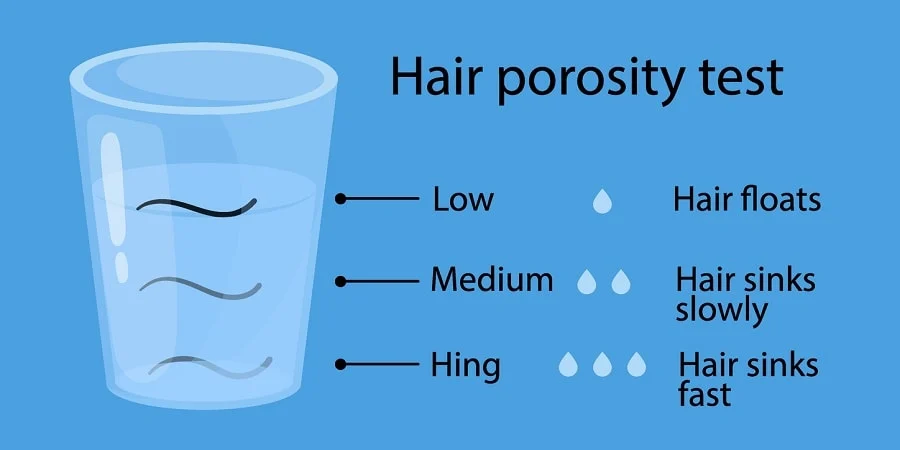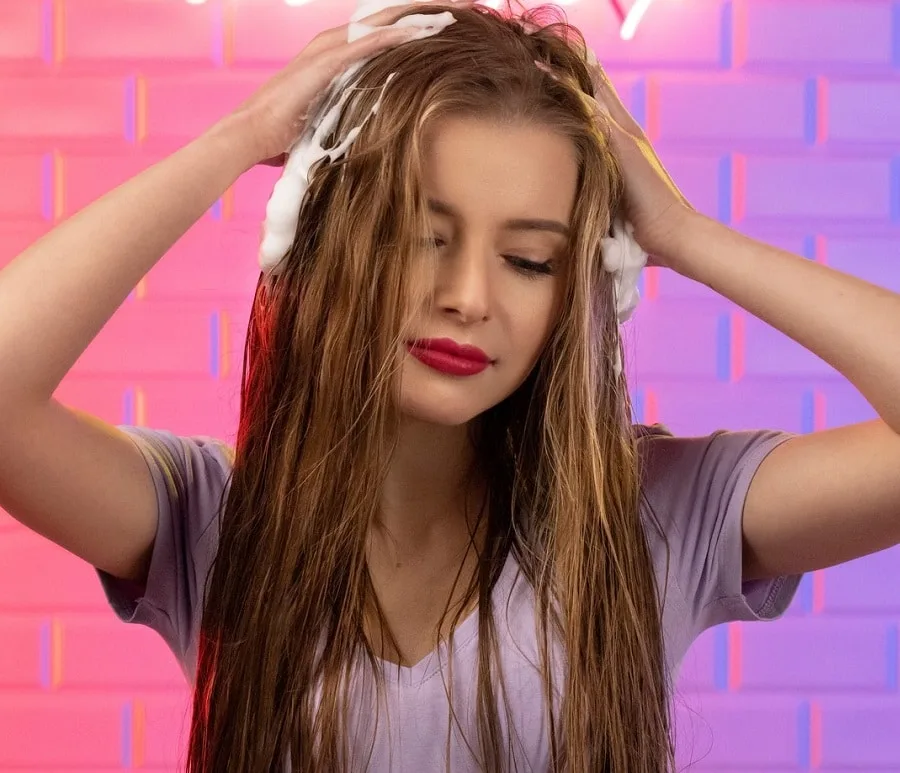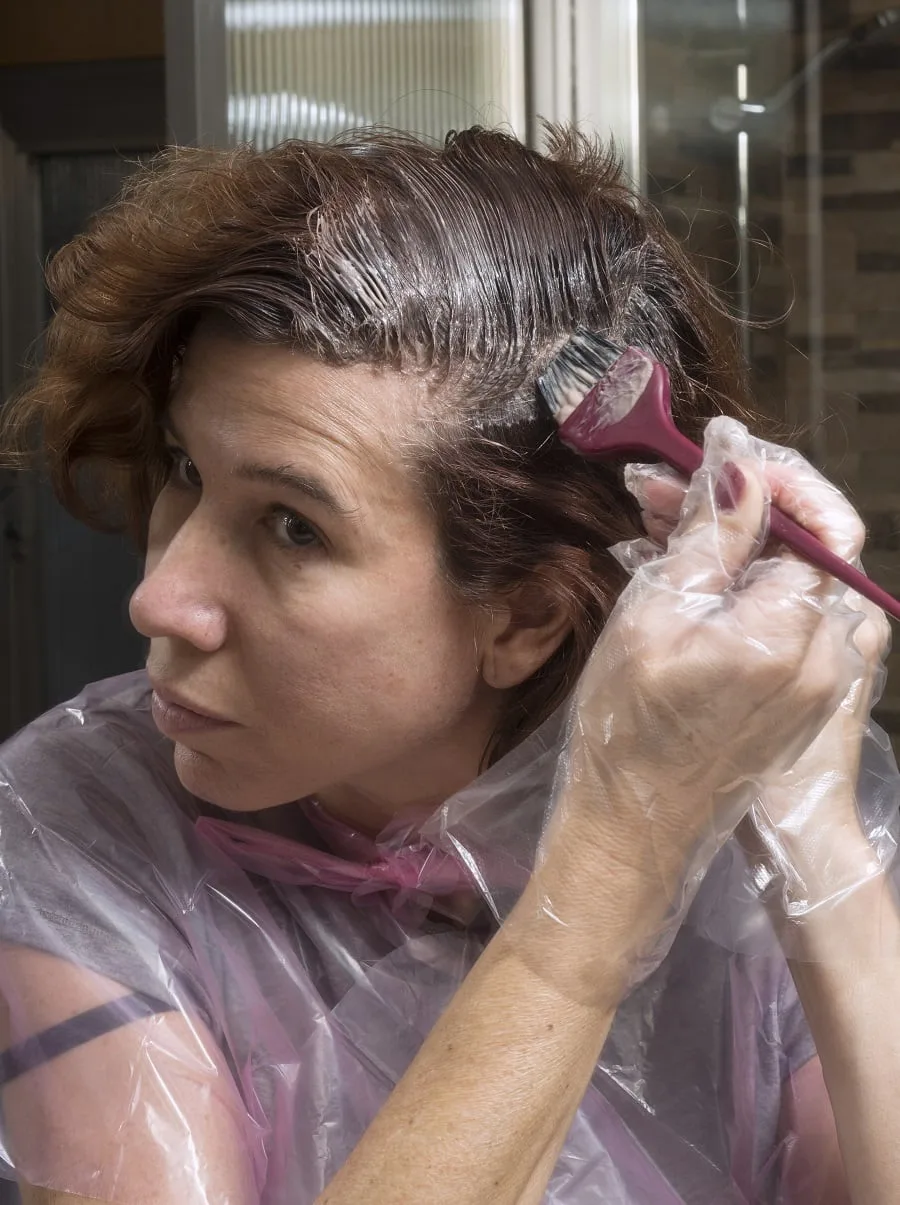Are you tired of your current hair color, but not sure how to dye your low porosity hair?
The compact cuticles and tight protein bonds of low porosity hair make it difficult to dye. Without proper precautions, you may end up with uneven, faded color while dying such hair type.
It is also difficult to remove hair colors from low porosity hair, so getting an unsatisfactory hair color can ruin your whole week.
Read this article to make sure don’t make a blunder while dying your low porous hair.
How To Tell If Your Hair Is Low Porosity?

Hair Porosity is a way to measure how well your hair can absorb and hold moisture. There are three porosity levels, low, normal, and high. Your hair’s porosity level can greatly affect the hair color results.
Low-porosity hair struggles with absorbing and releasing moisture and treatments. If you’re unsure about your hair’s porosity, you can follow these quick steps to determine its porosity level.

- Fill a glass with water.
- Place a strand of clean hair (hair without any products) in the glass of water.
- Wait two to three minutes.
If the strand floats, you have low-porosity hair. If the strand slowly sinks, then your hair has normal porosity. However, if it quickly sinks to the bottom, it has high porosity.
Can You Dye Low Porosity Hair?
Yes, you can dye low-porosity hair, but it requires specific techniques and considerations due to its tightly closed cuticles.
Dyeing low-porosity hair can present several challenges due to the unique characteristics of the hair type. Here are some of the common issues:
- The tightly bound cuticle layers in low-porosity hair make it difficult for the dye to penetrate the hair shaft.
- Due to its resistance to absorbing products, low-porosity hair often requires a longer processing time for the dye to take effect. However, leaving the dye in for too long can also damage the hair.
- Some areas may absorb the dye better than others, resulting in a patchy look. This can lead to uneven color application or colors that are less vibrant than expected.
So it is necessary to prepare your hair before starting to apply hair dye on low-porosity hair.
How to Prepare Low Porosity Hair Before Dyeing

Before you can dye low-porosity hair, you should prepare it for the best results. Below are some helpful tips for preparing
- Cleanse hair by clarifying it with a gentle shampoo to eliminate product residue without over-drying. Follow up with a chelating shampoo to clear away mineral deposits.
- Deeply nourish hair with a hydrating mask for 20+ minutes under a warm towel. The heat allows to open the cuticle for deeper conditioning. Use lightweight oils and a leave-in treatment to avoid buildup.
- Apply a hair porosity equalizer pre-color treatment to ensure even color distribution.
- Trim 1⁄4-1⁄2 inch off ends to remove splits and damage that can block dye absorption.
- Perform a strand test. Apply dye to a small section of hair to see how it reacts and to get an idea of the processing time needed for your desired result.
How to Dye Low-Porosity Hair

Now that you’ve adequately prepared your low-porosity for coloring let’s move on to how to dye it properly. Below are the best steps to follow for dyeing low-porosity hair.
1. Choose the Right Dye
For low-porosity hair, it’s advisable to select alkaline hair dyes, such as permanent colors. These dyes are more effective at opening the cuticles and depositing color into the hair shaft.
Semi-permanent or demi-permanent colors, which are less alkaline, might not be as effective on low porosity hair.
Ensure that the dye is applied evenly throughout your hair. Low porosity hair can resist color, so thorough and careful application is key. Make sure every strand is well coated with dye for uniform color.
2. Open Hair Cuticle with Heat
Applying gentle heat can open up the cuticles of low porosity hair. This is crucial because the tightly bound cuticles in low porosity hair make it difficult for dyes, to penetrate.
There are multiple ways to open the cuticle with heat.
A steam treatment gently lifts the hair’s cuticles with moist heat. This can be done using a professional hair steamer or even with a warm, damp towel over a shower cap.
You can also use a hairdryer on a low setting. The time under the dryer should be sufficient to warm the hair and slightly open the cuticles, typically around 10-20 minutes depending on the dryer’s heat setting.
3. Apply The Hair Dye
First, part your hair into a single middle section. Then, make two separate sections down the back, and lastly, make two different areas ear to ear.
Apply oil or petroleum jelly to your hairline to create a barrier that keeps the dye from staining your skin.
Apply the dye to your roots. Then going strand by strand, use the comb to apply the hair dye evenly and thoroughly, ensuring that your hair is completely saturated.
In addition, the comb will ensure that each strand is separated correctly so the dye is applied evenly.
Low porosity hair often requires more time for the color to fully develop. That’s why we advised you to strand test in the preparation stage so you know how much time it will require to reach the desired result.
4. Rinse Thoroughly
Once the processing time is complete, rinse your hair thoroughly with cold water. It’s important to ensure all the dye is washed out to prevent any further chemical processing.
Cold water will close the cuticles of your low porosity hair so you have successfully dyed your low prosity hair.
Tips to Maintain Dyed Low Porosity Hair

Now that you’ve prepared and dyed your low-porosity hair, the next step in the hair care process is doing everything you can to maintain your new color for as long as possible.
However, even with adequate prep and proper dyeing, your low-porosity hair will lose its new color quicker than normal porosity hair.
So, after coloring low-porosity hair, follow these tips to improve the longevity of your new look.
Use Color Safe and Lightweight Products
To make your new color last longer on your low-porosity hair, use shampoo and conditioners specifically created for color-treated hair.
Lightweight products are necessary to ensure that your low-porosity hair doesn’t experience product build-up that can alter your new hair color.
Lightweight leave-in treatment will help lock in moisture which will, in turn, help your low-porosity hair maintain its new color. Leave-in treatments are most beneficial right after the dyeing process.
Avoid Hot Water
Avoid excessively hot showers and baths. Hot water is known for fading hair color, so it’s best to wash your hair with cool or lukewarm water to ensure the color lasts as long as possible.
Minimize Sun Exposure and Heat Styling
Just like excessive hot water, UV rays, and high heat from heat styling devices will fade your new color—so it’s best to minimize your low-porosity hair’s exposure to these situations.
So, by following the tips in this article you can prepare, dye, and maintain your low porosity hair effectively.
